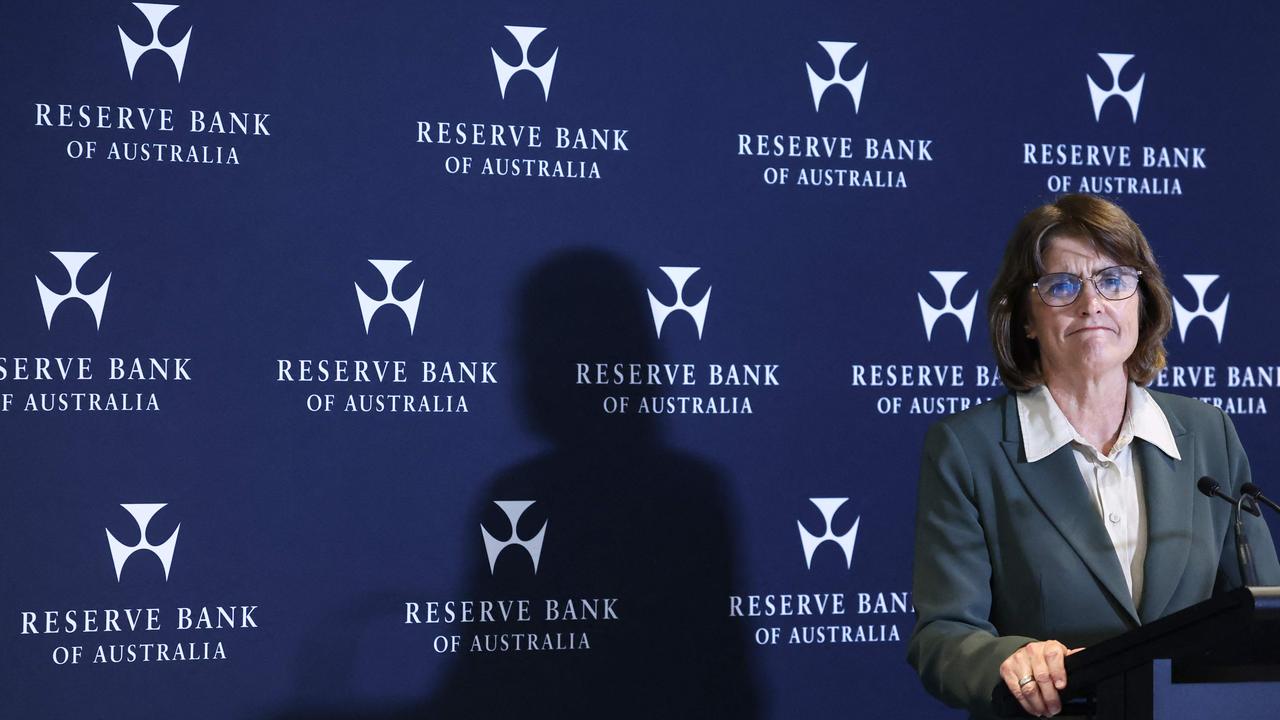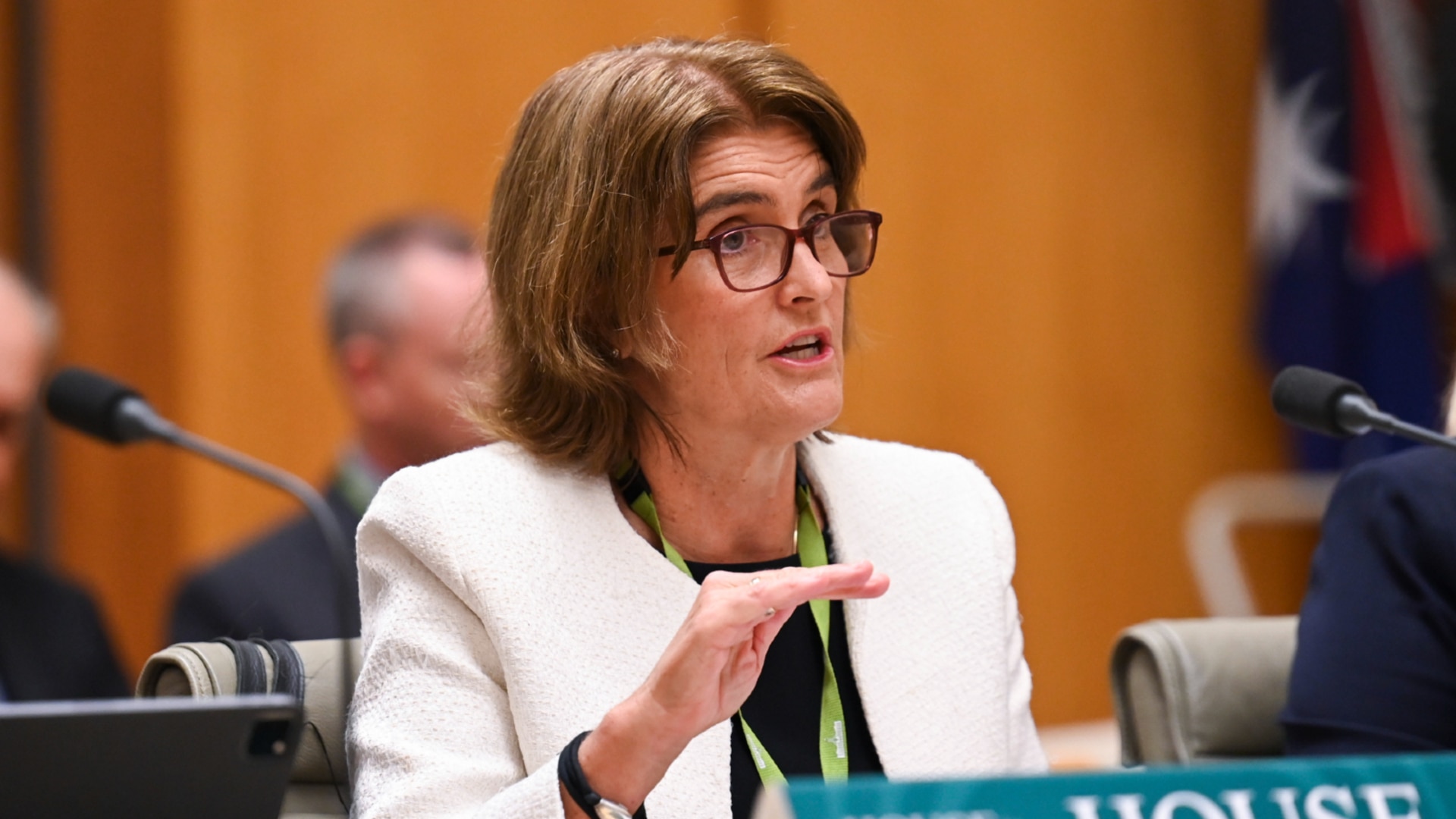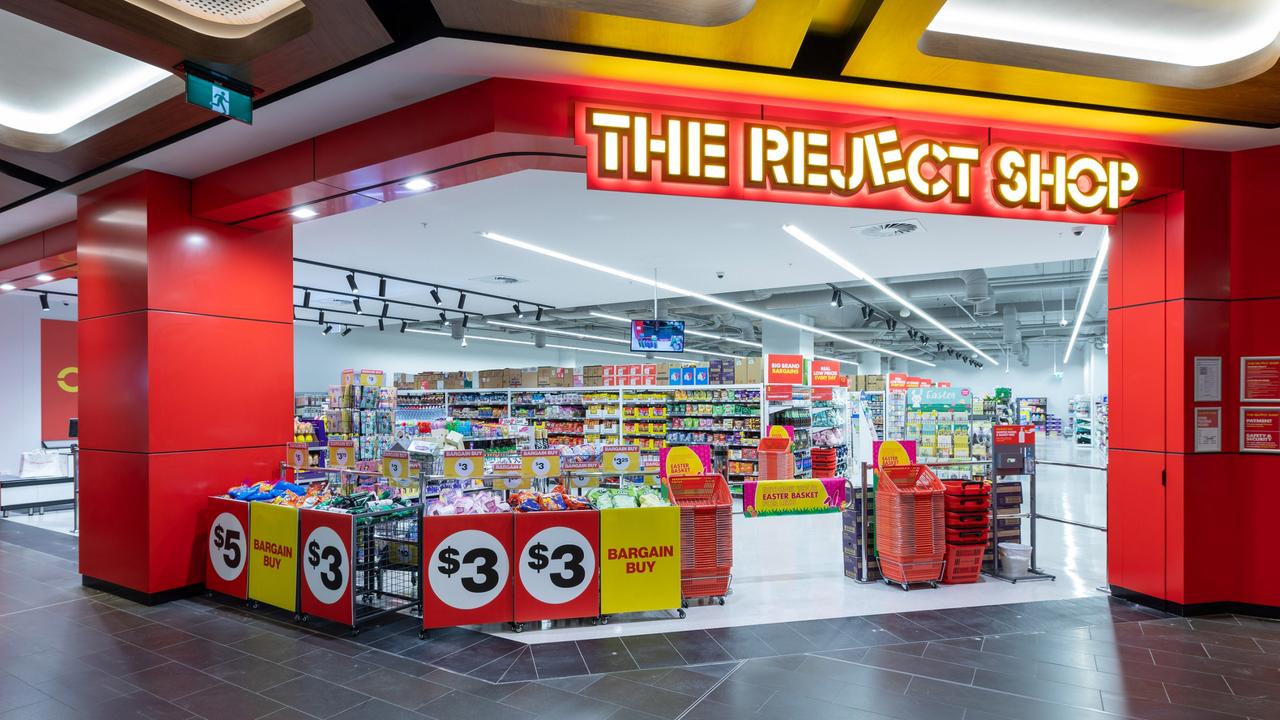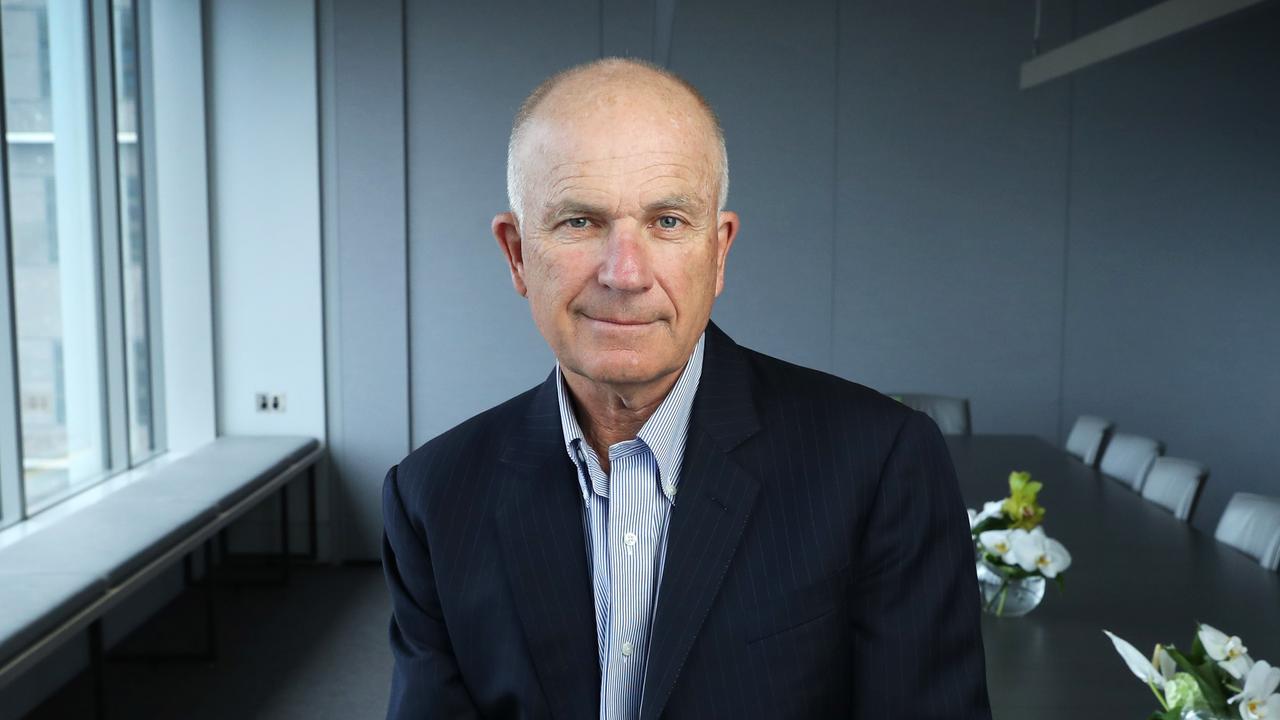RBA interest rate cut lifts ASX 200 to three-month high
‘Cautious’ is the new catch word for the RBA but it’s more about the economy rather than inflation as the trade war has increased risks.

Business
Don't miss out on the headlines from Business. Followed categories will be added to My News.
A surprisingly dovish shift in tone by the Reserve Bank this week is good news for the stockmarket and may also help support the domestic bond market amid upward pressure on yields offshore.
If the RBA board had cut rates but stayed “cautious” on the “prospects for further policy easing” as it was when it started cutting in February, the ASX may have struggled to make headway after an exceptionally strong rebound of late and the local bond market wouldn’t have rallied.
But even as US stocks ended a six-day winning streak, the ASX 200 rose as much as 1 per cent to a three-month high of 8422.9 points on Wednesday before closing up 0.5 per cent at 8386.8.
In hindsight, the board started to wriggle out of its “cautious” outlook on the “prospects for further policy easing” at its April meeting. Although that caution was still in the context of monetary policy, the board trimmed its words to say that it was simply “cautious on the outlook”.
This month, the context of the RBA’s remaining caution shifted further toward the economy, rather than inflation and the risk of cutting rates too much.
The board said its latest rate cut would “make monetary policy somewhat less restrictive”.
However, it remained “cautious about the outlook, particularly given the heightened level of uncertainty about both aggregate demand and supply”.

The context seemed to be mainly about whether monetary policy is still too restrictive to suit the weakening economic outlook, which was highlighted by the RBA’s economic growth downgrades. The board saw downside risk to demand that could hit the economy, with the trade war now set to have “an adverse effect on global economic activity”.
It also saw upside risk from a tight labour market that could be inflationary.
But RBA governor Michele Bullock said the board was “open to the idea that we may be overestimating or underestimating full employment”.
It may take a long time for the RBA to change its official view on full employment.
However, the fact that inflation has come back to the band while the non-accelerating inflation rate of unemployment has been well below the RBA’s estimates around 4.5 per cent for a sustained period suggests that NAIRU is probably lower than previously thought.
The board saw downside risk to supply, which would be inflationary if protectionist trade policies hurt supply chains. But Ms Bullock noted the trade war had been “a complete rollercoaster” and how tariffs affect the global economy was hard to predict.
While the board looked at a “trade peace” scenario that would be inflationary, and a “trade war” scenario that would be deflationary, its baseline forecast was “higher tariffs and uncertainty” relative to its February outlook. The emphasis was mainly on the downside risk to the economy.
The board “considered a severe downside scenario and noted that monetary policy is well placed to respond decisively to international developments if they were to have material implications for activity and inflation in Australia”. It didn’t mention the “trade peace” scenario in its decision.
Interestingly, the RBA’s model of the nominal neutral cash rate was surprisingly lowered materially. It implies that if the RBA were to decide it needed to take monetary policy to a “neutral” or “stimulatory” setting, it would have to cut rates more than it previously expected.
The RBA reinstated a chart showing that the average of its models for the nominal neutral rate was close to 2.75 per cent.
According to UBS chief economist George Tharenou, this was “clearly more dovish than their November statement”, which showed that the average of its models for the nominal neutral rate was close to 3.75 per cent.
The February statement was less clear as it didn’t show an explicit average, albeit it had probably already been lowered somewhat, Mr Tharenou added.
Significantly, the RBA’s models showed a lower estimate of the nominal neutral rate despite still assessing that unemployment remains below full employment.
“The labour market remains tighter than full employment,” the RBA said.
“Recent GDP outcomes remain higher than estimates of potential output, suggesting that aggregate demand continued to exceed the capacity of the economy to sustainably supply goods and services.”
Mr Tharenou still sees the RBA lowering the cash rate by 25 basis points in August and November, but the RBA’s comments were “dovish enough to now suggest there are two-way risks around our view”.
In other words there’s more chance of three more cuts, consistent with market pricing.
In his view the RBA is unlikely to cut rates in July because it has so far cut rates only at meetings after the quarterly CPI and Ms Bullock has dismissed the monthly inflation indicator as too volatile. But he concedes that the RBA could be driven more by global uncertainty, as the timing and magnitude of US tariffs remains highly uncertain. While domestic fiscal policy remains very stimulatory; and productivity growth extremely weak, Ms Bullock didn’t focus on these factors.
According to Morgan Stanley, the prospect of supportive monetary and fiscal policy “align to a core positioning bias that favours domestic and tariff agnostic equity exposure”.
“In our view, a sustained tilt towards domestic-sourced earnings is warranted, paired with leverage to cash-rate-sensitive sectors given our views on the evolution of fiscal and monetary paths,” said Morgan Stanley equity strategist Chris Nicol. “Stick with core holdings in quality growth, while retaining some risk-reward upside in diversified resources should trade policy off-ramps persist.”
Originally published as RBA interest rate cut lifts ASX 200 to three-month high








